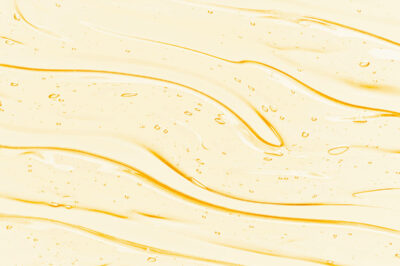Table of Contents[Hide][Show]
- A Gentler Choice for Sensitive Skin: Vitamin C with Lactic Acid
- Practical Guide: How to Use Glycolic Acid and Vitamin C Effectively
- What to Know About Glycolic Acid and Vitamin C Together
- Potential Risks & How to Solve Them: Glycolic Acid & Vitamin C
- Unlocking Radiant Skin With Vitamin C and Glycolic Acid
Are you on a quest for radiant, healthy skin and curious about using Glycolic Acid and Vitamin C together? While this combination is often discussed, its implications—especially Glycolic Acid’s potential for irritation—deserve attention. Gentler AHAs like Lactic Acid are often recommended instead, offering similar benefits with less risk, particularly when paired with Vitamin C. This article explores their use, safety, and suitability for all skin types.
But before you rush to combine this popular duo, consider these key points:
- Not always the “perfect pair” for everyone: Despite the hype, they aren’t a universal solution.
- Potential for irritation if misused: Combining them incorrectly can lead to redness and sensitivity.
- Safe & effective use requires knowledge: Understanding how to combine them is crucial for success at home.
The glycolic acid and vitamin C duo is a hot topic across online forums, social media, and beauty blogs. Yet, beyond the praise, questions linger: Are they truly “perfect” for all skin types? How to use glycolic acid and vitamin C together safely and effectively at home? What’s the best, gentlest way to combine them for optimal results? And what common myths need clarifying? This in-depth article analyzes glycolic acid and vitamin C, offering an objective, comprehensive perspective to empower confident decisions for radiant, youthful skin.
How Does Glycolic Acid Affect Your Skin?
Glycolic Acid, the smallest type of AHA from sugarcane, beets, and fruits, breaks down surface impurities with a strong action that can reveal fresher skin but often increases sensitivity and irritation risk. In contrast, Lactic Acid, a gentler AHA from natural sources like honey or milk, offers a milder approach with similar smoothing effects and less discomfort, making it a safer choice—especially alongside Vitamin C.
The Positive Skin Effects of Glycolic Acid
While Glycolic Acid is known for certain resurfacing effects, its intensity requires caution. It can remove surface impurities and smooth uneven skin, potentially brightening the complexion, but its potency often leads to irritation, sun sensitivity, or disrupted skin balance. Gentler Lactic Acid achieves similar results—revealing fresher skin and enhancing tone—with lower risk, which is why we recommend it over Glycolic Acid, especially with Vitamin C.
How is Vitamin C Good For Your Skin?
Vitamin C, also known as ascorbic acid, stands out as a skin care superstar, distinct from AHAs like glycolic acid. This potent antioxidant, vital for overall health and radiant skin, works its magic through key mechanisms: it provides antioxidant protection, enhancing skin firmness and the look of elasticity. Sourced naturally from ingredients like kakadu plums and citrus fruits, vitamin C offers a powerful yet natural approach to skin care, providing a range of benefits that vitamin C can bring to your skin.
Key Benefits for Skin
Vitamin C delivers a wide array of impressive benefits, enhancing skin health and appearance, helping with brightening, firming and evening the look of skin tone:
- Protects Skin: Effectively combats environmental stressors, shielding skin from everyday aggressors like pollution.
- Brightens Skin and Evens Skin Tone: Improves uneven skin tone, reduces dullness, and promotes a radiant, glowing complexion.
- Reduces the Look of Dark Spots: Targets the look of dark spots by helping minimize their appearance, gradually fading unwanted marks.
- Boosts Skin Bounce: Enhances the look of skin elasticity and firmness, and diminishes the appearance of fine lines and wrinkles.
- Enhances Skin Barrier Function: Strengthens the skin’s protective barrier, improving defense against external aggressors and aiding moisture retention.
A Gentler Choice for Sensitive Skin: Vitamin C with Lactic Acid
Seeking a gentler approach to exfoliation, particularly when paired with vitamin C? For those finding glycolic acid too intense, especially sensitive skin types, lactic acid instead of glycolic acid emerges as a compelling alternative. Lactic acid, recognized as a hydrating and the most non-irritating AHA, provides a milder exfoliation experience.
The combination of vitamin C and lactic acid offers distinct benefits. Primarily, lactic acid instead of glycolic is significantly gentle and less likely to cause irritation. This gentleness is key for sensitive and dry skin, allowing for enhanced exfoliation and radiance without significant risk of irritation. While gentle, lactic acid still deeply exfoliates the skin effectively, providing sufficient exfoliation to enhance vitamin C’s absorption and amplify the benefits that vitamin C can bring to your skin, such as noticeably helping with brightening, firming and evening the look of skin tone.
Furthermore, lactic acid stands out as a hydrating AHA. Its humectant nature actively attracts moisture, contributing to balanced hydration and helping to enhance the skin barrier function, a crucial aspect for maintaining skin health, especially after exfoliation. This pairing of vitamin C with gentler AHAs like lactic acid delivers a synergistic effect, gently promoting anti-aging benefits and overall skin radiance in a skin-friendly manner.
For a product embodying this gentle yet effective approach, Annmarie Skin Care’s Resurfacing Facial Exfoliant is an excellent choice. Formulated with lactic acid derived from honey, this exfoliant offers a gentle and safer alternative way to gain these combined benefits.
Note: When selecting different types of vitamin C in skin care, remember that Vitamin C stability is key for effectiveness. Not all forms are equal; unstable vitamin C degrades in light and air, losing potency and potentially becoming irritating. L-Ascorbic Acid, while the most common and researched form, suffers from stability issues, easily oxidizes, and requires a low pH and irritates, which can be problematic for sensitive skin.
For a stable and gentle alternative, consider Tetrahexyldecyl Ascorbate (THDA). This vitamin C derivative is oil-soluble, gentle yet effective, less likely to cause irritation (making it suitable for sensitive skin), and remains highly effective. Because of this, THDA is Annmarie Skin Care’s top choicehoice for its superior efficacy, gentleness, and overall skin-loving benefits in our formulations.
Practical Guide: How to Use Glycolic Acid and Vitamin C Effectively
If you’re considering Glycolic Acid and Vitamin C together, separate sessions are key due to Glycolic Acid’s potency and irritation potential. We recommend gentler Lactic Acid instead, which offers effective results with less risk. This section explains what to watch for in an AM/PM approach with these actives.
For cautious use of AHAs like Glycolic Acid with Vitamin C, start low and go slow. Glycolic Acid’s strength means it’s not needed daily—using it sparingly, if at all, reduces risks. Gentler Lactic Acid can be applied a few times a week instead. While vitamin C may be used daily, depending on the type of vitamin C in skin care your skin best responds to, it’s always best to start slowly and patch test both AHAs and vitamin C. Begin with lower concentrations, less frequent application, and introduce new actives one at a time to gauge your skin’s tolerance and minimize the risk of dryness and irritation.
Sample AM & PM Skin Care Routines:
To illustrate how to seamlessly integrate glycolic acid (or lactic acid) and vitamin C into your daily skin care, here are sample routines outlining separated AM & PM application:
- Evening Routine (AHA Considerations):
- Step 1: Begin with a gentle cleanser to remove makeup, dirt, and impurities, preparing your skin for exfoliation.
- Step 2: If using Glycolic Acid, apply sparingly due to its strength, or opt for a gentler Lactic Acid product like our Resurfacing Facial Exfoliant. This step can reveal fresher skin, but Glycolic Acid requires extra caution to avoid sensitivity.
- Step 3: Follow with a hydrating toner to rebalance your skin’s pH and provide a layer of hydration.
- Step 4: Use a serum rich in hydrating and soothing ingredients to nourish and replenish your skin after exfoliation.
- Step 5: Seal in hydration and provide emollient benefits with a facial oil, supporting your skin’s nighttime recovery.
- Morning Routine (Vitamin C Focus – Protection & Brightening):
- Step 1: Cleanse: Start with a gentle cleanse to refresh your skin in the morning.
- Step 2: Tone: Apply a toner to balance and hydrate your skin.
- Step 3: Apply Vitamin C Serum: Incorporate your vitamin C serum, allowing it to absorb fully into the skin to deliver its antioxidant protection and skin brightening benefits throughout the day.
- Step 4: Moisturize with a Facial Oil: Follow with a facial oil to provide hydration and lock in the serum.
- Step 5: Apply Sunscreen (Crucial!): This step is non-negotiable! Finish with a broad-spectrum sunscreen to protect your newly exfoliated and vitamin C-treated skin from harmful UV rays. Don’t forget sunscreen–it’s essential for maintaining skin health and preventing sun damage.
- Alternative Morning Routine (Vitamin C Boosted Moisturizer – Enhanced Convenience):
- Step 1: Gentle morning cleansing sets the stage for product absorption.
- Step 2: Toning prepares and hydrates the skin.
- Step 3: A hydrating serum provides a base layer of moisture.
- Step 4: For a streamlined approach, add 1-3 drops of our THDA-rich Brighten Concentrated Boosting Elixir to your facial oil to create a vitamin C-boosted moisturizer. This allows you to combine hydration and vitamin C delivery in one step.
- Step 5: Sunscreen remains the crucial final step, protecting your skin throughout the day.
By adhering to these guidelines and sample routines, you can confidently and effectively know how to use glycolic acid (or lactic acid) and vitamin C together in separate sessions, maximizing their synergistic benefits while minimizing potential irritation, and ultimately achieving a healthier, more radiant complexion.
Use Vitamin C and AHA (Glycolic/Lactic Acid) at Different Times of The Day
It’s best to avoid combining glycolic acid (or lactic acid) and vitamin C in the same skin care session if you have a more sensitive skin type. For optimal results and to minimize potential irritation, utilize these powerful ingredients in separate sessions, establishing a separated AM & PM skin care approach.
Reasons for Separated Morning & Evening Use:
- Evening (AHA – Glycolic/Lactic Acid): Applying glycolic acid or lactic acid in your evening routine takes advantage of your skin’s natural overnight regeneration cycle. Since AHAs deeply exfoliate the skin, nighttime application allows the skin to effectively recover and rejuvenate while you sleep, away from potential daytime sun exposure. This separation also helps mitigate potential sun sensitivity that can be heightened immediately after AHA use.
- Morning (Vitamin C): Incorporate vitamin C into your morning routine to harness its potent antioxidant protection during the day. Vitamin C functions as a robust defense, shielding your skin from daily exposure to environmental stressors like pollution. By applying it in the morning, you proactively equip your skin to combat daily aggressors.
Choosing Gentle AHAs for Separate AM/PM Routines:
When implementing a separated AM & PM strategy, opting for a gentler AHA such as lactic acid instead of glycolic is strongly advisable. While glycolic acid is effective, its higher potential for irritation, particularly when used in conjunction with vitamin C (even when application is separated), makes lactic acid a preferable choice. Lactic acid instead of glycolic presents safer and gentler alternatives, reducing the risk of dryness and irritation while still providing adequate exfoliation to complement and enhance vitamin C’s skin-brightening and other beneficial properties, particularly for those with sensitive skin.
What to Know About Glycolic Acid and Vitamin C Together
Acknowledging the potential benefits of combining (when used correctly and separately), we must also emphasize the risks and important considerations of using glycolic acid and vitamin C.
Optimal Benefits from Correct and Separate Combination
Pairing Glycolic Acid with Vitamin C in separate sessions is often discussed, but its effects depend on careful use:
- Surface Action and Vitamin C: Glycolic Acid removes surface impurities, potentially aiding Vitamin C absorption, though its intensity may cause irritation. Gentler Lactic Acid offers a safer alternative.
- Tone and Radiance: Vitamin C can enhance skin brightness, but Glycolic Acid’s role comes with risks compared to milder AHAs.
- Supports Anti-Aging and Improves the Look of Wrinkles: Both glycolic (or lactic) acid and vitamin C have benefits that support anti-aging. Vitamin C is crucial for improving skin bounce, while glycolic (or lactic) acid can improve skin texture and reduce the appearance of fine lines. Used separately, they can contribute to a more youthful-looking complexion.
Potential Risks & How to Solve Them: Glycolic Acid & Vitamin C
While both glycolic acid and vitamin C offer remarkable skin care benefits, understanding their potential drawbacks and risks, especially when combining glycolic acid and vitamin C together, is crucial for safe and effective use. Whether considering glycolic acid alone or in combination with vitamin C, several key considerations come into play:
- Risk of Irritation & Dryness: The most common concern is the heightened risk of dryness and irritation. Glycolic acid itself can be potent, and certain different types of vitamin C in skin care (particularly L-Ascorbic Acid) can also be irritating. Using them together, even in separate sessions, can exacerbate these effects, leading to redness, rash, peeling, and uncomfortable dryness, especially for sensitive skin.
- Skin Barrier Disruption & Sensitivity: Over-exfoliating with glycolic acid can compromise the skin barrier function, weakening its protective capabilities and increasing sensitivity. This makes skin more vulnerable to environmental irritants, sun damage, and moisture loss, further contributing to dry skin and peeling and irritation.
- Potential for Skin Thinning (Long-Term): Aggressive and frequent use of glycolic acid over extended periods may thin skin over time. This can result in fragile skin that is more susceptible to damage and premature aging.
- Oil Imbalance (Paradoxical Sebum Increase): In some instances, overuse of glycolic acid can paradoxically trigger oil overproduction. As the skin attempts to compensate for moisture loss and barrier disruption, it may produce excess sebum, leading to imbalances and potentially breakouts.
- Key Considerations: If using Glycolic Acid with Vitamin C, separate sessions (e.g., Vitamin C in the morning, Glycolic Acid at night) are essential to limit risks, though gentler AHAs like Lactic Acid may be safer.
- Separate Sessions: Always using them in separate sessions (e.g., can use vitamin C in the morning and glycolic acid at night).
- Proper Layering & Timing: Understanding how to layer glycolic acid and vitamin C appropriately, allowing sufficient time between applications.
- Lower Concentrations: Opting for lower concentrations of both actives, especially when starting out or for sensitive skin.
- Careful Skin Observation: Closely observe skin response and adjust frequency and concentration accordingly.
- Patch Test: Always start slowly and patch test new products to assess tolerance before full application.
At Annmarie Skin Care, we advocate for a mindful and gentle approach to skin care. Recognizing the potential drawbacks and risks associated with potent actives like glycolic acid, we prioritize safer and gentler alternatives and emphasize listening to your skin.
While acknowledging the potential benefits of combining these ingredients when used separately and correctly, we believe in nurturing healthy, radiant skin for the long term by working with your skin’s natural balance, not against it. For those seeking effective exfoliation without harshness, our Resurfacing Facial Exfoliant, formulated with gentler AHAs, deeply exfoliates the skin, providing an excellent choice. Don’t forget sunscreen daily, regardless of exfoliant use, for essential skin protection.
Frequently Asked Questions
What Not To Mix With Glycolic Acid?
It’s best to avoid mixing glycolic acid with other exfoliating agents, such as salicylic acid or retinol or retinol alternative, as this can cause irritation or dryness. Additionally, avoid using glycolic acid with products that have a higher pH, such as niacinamide and bar soaps, as this can neutralize the acid and reduce its effectiveness. Ideally, use lactic acid instead of glycolic acid as your primary AHA for the same exfoliation effects without irritation.
Can You Use Vitamin C With Other Acids?
It is generally safe to use vitamin C with other acids, such as lactic acid, as long as they are used in separate sessions and in the appropriate concentrations. As both are acidic, using them together in one session could irritate your skin. However, it is always recommended to consult with a skin care professional or a dermatologist for personalized advice.
How Long Does It Take To See Results From Glycolic Acid?
It is important to note that results may vary depending on individual skin type and condition. Some may see visible improvements within a week, while others may take several weeks or even months to see results. Consistency and patience is key when using an AHA (whether that be glycolic acid or safer, non-irritating lactic acid).
What Should I Do If I Experience Irritation?
If irritation occurs, reduce the frequency of use until your skin adjusts. And consider using lower concentrations of both ingredients or create more space between days when alternating their usage. Always patch tests before full application to better understand how your skin responds.
Are There Any Skin Types That Should Avoid This Combination?
Those with sensitive skin should exercise caution and start with lower concentrations. Or individuals with certain skin conditions may need to consult a holistic dermatologist or health care practitioner before using this combination.
Unlocking Radiant Skin With Vitamin C and Glycolic Acid
This guide provides insights into pairing Vitamin C with Glycolic Acid, highlighting risks and gentler alternatives like Lactic Acid for your regimen. Dive into the world of radiant skin with confidence, armed with the insights and best practices presented in this article.If you’re looking for other combinations with actives, check out this article on combining vitamin C with niacinamide for anti-aging benefits.





Leave a Reply